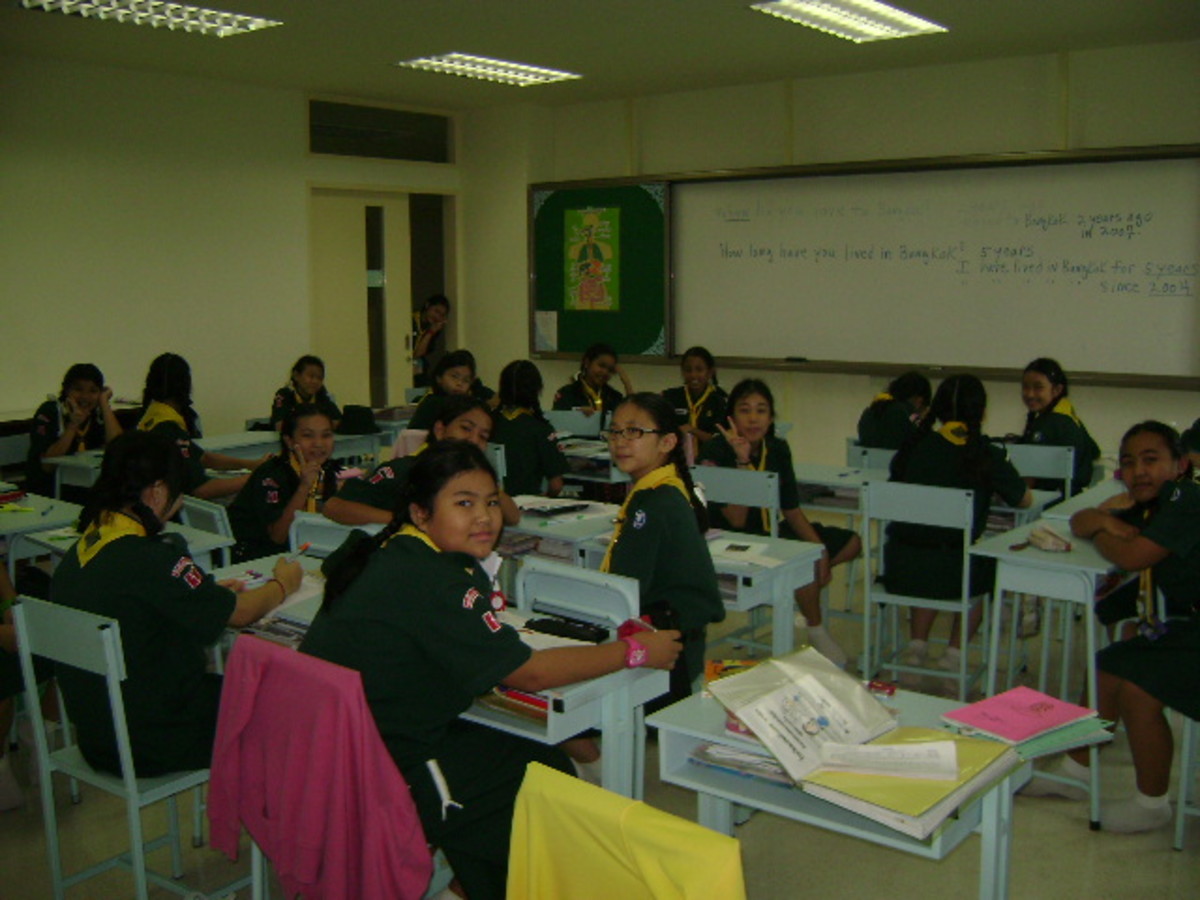EFL Teaching Guide 2 - A two-page crash course for new English Teachers
Part Two; EFL teaching techniques and tips
This is the second part of my EFL teaching crash course, and it concerns the specific EFL teaching skills and techniques you’ll need for a successful class. Of course, you will improve with experience – if you want to – but with these tips you should hopefully be able to avoid some common English teaching pitfalls.
For Part One, which covers lesson planning, click here.
Making the Grade; Using appropriately graded English for instruction
When you start your first lesson, you might not know much about your students’ English ability. However, using some of the techniques below you should be able to determine their levels quite quickly, especially if you have a small class. Be on the safe side and speak slowly and clearly. Avoid using idioms at first; speak plainly yet politely. “Please stand” or “Please look at page 13” are better than “If you could please stand up” or “Please open your books and turn to page 13.” The differences are small but, with low level students, will make all the difference. Grading your language on the fly is tough for new teachers, so look through your lesson plan and decide on the instructions you will give. Visualize how you will introduce activities, considering your gestures too.
Do not fall into the trap of using incorrect English. Students will listen to you and pick up bad habits from your mistakes. Spending a long time in a non-English speaking country can mean your own English suffers. English teachers in Japan, for example, often start to drop articles and leave off the odd plural “S.” For new teachers too, there will be a temptation to miss out non-essential words in order to help your students understand you more easily. Resist this with all your might!
The Spice of Life; Varying your EFL class activities and explanations
This applies to your planning and your teaching. There is something very useful called the VAK model. This suggests that there are three kinds of learners: visual learners learn from what they see, auditory learners learn most from what they hear or read, and kinesthetic learners gain most from doing – that is, from practical experience. The model is of course simplistic. That’s why it’s a model. However, including activities which incorporate these three kinds of learner, and teaching in a way that appeals to each of them, will give you the best chance of getting through to everyone. A picture may indeed tell a thousand words to one person, others prefer other means of receiving and processing information.
All talk? Cutting down your teacher talk
It is useful for students to have the chance to listen to native speakers of English, but listening and talking are very separate skills. Students need to maximize their speaking opportunities, especially if you are teaching EFL as opposed to ESL, when your class may be your students’ only opportunity to speak English.
There will be times when you need to speak a lot; don’t panic about this as you are an English teacher, not a mime artist. If you are speaking about 20% of the time, and your students are talking for the other 80%, then you are doing about right. There will be variations, depending on the type of class you are teaching, but this is definitely a useful guideline.
Self self self; allowing students to correct their own errors
When you hear mistakes from your students, try to avoid the temptation to leap in to correct them directly. Prompting students to correct themselves is usually preferable. For example:
STUDENT: I went to beach yesterday?
TEACHER: I went to…beach?
STUDENT: Yes.
TEACHER: To… beach?
STUDENT: To the beach?
TEACHER: Yeah, that’s it. Once more, please.
STUDENT: I went to the beach yesterday.
TEACHER: Perfect! Which beach…?
It does not always go quite this smoothly. Use your whiteboard to indicate if there is a missing word, or if one word has been misused, cross it out to help your student isolate the problem. Allow other students to help if necessary.
Of course, this process can be longwinded and there may be times you have to skip a few steps. Always – without fail – have the corrected student demonstrate the complete structure correctly at the end, and give him or her some praise.
The Model Teacher; modeling complex EFL activities
Some activities are hard to explain purely by explaining them verbally. When you learn to play a card game, you usually learn by playing it through a few times or by watching others. Listening to a lengthy explanation is not particularly effective. The same applies to English activities. Choose a few strong students and teach them each small step at a time, as they progress through the activity. Have the other students watch. The audience will begin nodding their heads once they “get it.” Then, you can set up all the groups and have them “play.”








